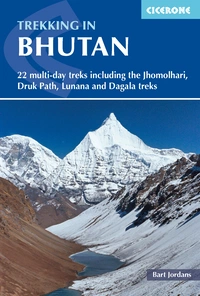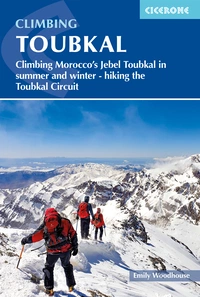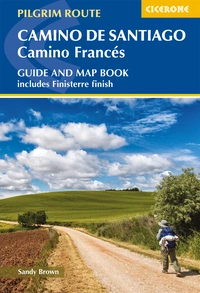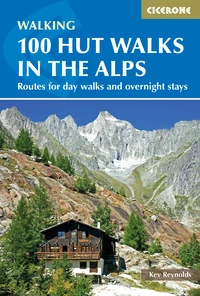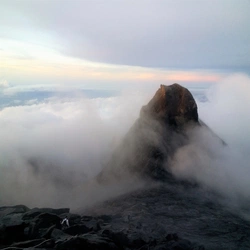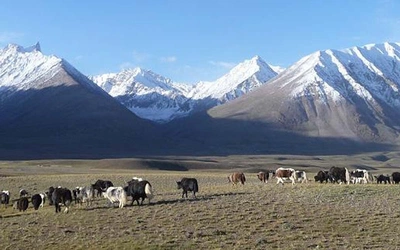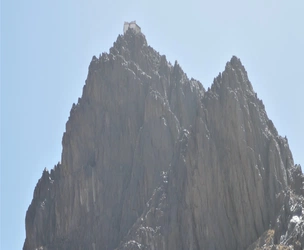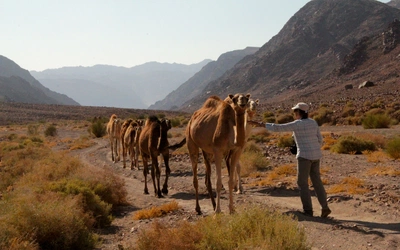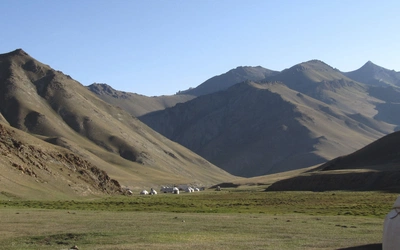In a promised land – the Lebanon Mountain Trail
Mike Laing spent a week walking part of the Lebanon Mountain Trail, where he discovered dramatic landscapes, a vibrant culture and friendly, welcoming locals.
From a young age I have been fascinated by Lebanon. Perhaps I was drawn to the sophisticated reputation Beirut held prior to the civil war, the Paris of the Mediterranean by all accounts. My Canaan dreams remained sidelined by life, other projects and work, until two years ago when a chance mention of the Lebanon Mountain Trail (LMT) by a client of mine led to a revival of interest. At the very close of the current season I made it at long last to this fascinating country.
The starting point for my planning was the Lebanon Mountain Trail Association website, which is the only source of meaningful data on the 470km trail. Since the trail’s inception in 2009, the LMTA has worked wonders to negotiate routing and waymark much of the trail with white and purple ‘blazes’; white represents the snow-topped mountains, purple the dye obtained from shellfish in the coastal waters. The LMTA website provides the basic information required to plan a trip and also has an online outlet selling 1:25,000 mapping. Local changes and rerouting since they were printed have robbed these excellent maps of much of their utility, although the LMTA has plugged the gap with their outstandingly accurate and up-to-date GPS route.
As the season’s end was approaching I opted for a limited visit along a central section of the LMT, starting in Ehden and heading south to Faraya, a distance of 120km taking in seven of the 27 stages that make up the entire trail. This itinerary would take in the Qadisha Valley, two cedar reserves and the Baatara Gorge.
Flying into Beirut felt risqué and I was filled with excitement at what lay ahead; it is hugely consoling to feel so viscerally, despite near on a half-century of travel and adventure.
Beirut has long buried the physical scars of the 15-year civil war that ended in 1990; my taxi driver from the airport will bear his for life by way of his prosthetic leg. Welcome to Beirut!
Spending a day in Beirut I visited the LMTA office (to collect maps and get any further tips), buy gas and tie down transport to Ehden. I opted to get around the city on foot and by the time I had ticked all my boxes I had a small blister developing on my big toe. Re-sealable gas was my Achilles heel and it proved extremely difficult to source; I did so eventually at Mike Sport in the Karout Mall after a whole number of wild goose chases. My map set was incomplete due to some sheets being out of print so I availed myself of the GPS file while at the LMTA office. This can also be downloaded from their website. I recommend the Locus Maps app, which worked well at all times. Surprisingly for such a modern country, there is no public transport in Lebanon and the void is filled by private operators running small vehicles; timetables are not published nor do buses display route number or destination information in English. So, if you’re heading out of town, visit one of the three hubs: Charles Helou, Daoura or Cola, and suss it out before travelling.
Day 1: Croissants and optimism
The next morning and filled with croissants and optimism, I arrived at Daoura for my 8.30 departure to Ehden, a 90-minute journey. My bus made alarming grinding sounds from the off, and 15 minutes later we had broken down on the hard shoulder of Route 51 heading north out of Beirut. A replacement vehicle arrived within 20 minutes and we continued uneventfully. As the bus climbed steeply into the mountains, the sunny coastal weather was replaced by grey and ominous clouds. Ehden turned out to be a substantial and sprawling resort town but, now, in mid-November it was largely shut up for the coming winter. Maybe by fluke but more likely down to the driver clocking my large rucksack, I was urged off the bus on a street corner and found myself on the LMT’s transit through the town; thank you driver! Within a minute the heavens yawned open, sending me scuttling into the nearby town hall at the invitation of some kindly locals. I remained captive for four hours as the most almighty thunderstorm decided to loiter over the town. I started counting the delay between the fearsome flashes and the ear-splitting crashes – half a second was not a good omen nor a cue to begin walking; I stopped counting. Gloomily, I considered my options and as 3pm rolled past, I realised my walking plans for Day 1 were in tatters as it would be dark within two hours.
Eventually, the thunder ceased. I donned waterproofs and deployed my trekking umbrella before heading downhill through rain and hail. Discovering that the LMT is thinly blazed through towns and villages I followed the GPS from under the umbrella. With limited daylight I considered a hotel but none seemed to be open. My growing concern was that if I didn’t find a tent pitch soon I’d end up thrashing around in the wet, cold and dark. With limited options I plugged on and picked up the blazes on Ehden’s outskirts. These led me into the Horsh Ehden Nature Reserve via a steep descent over wet and extremely slippery limestone. After half an hour’s careful descent a small grassy glade opened up beside the trail. In the fading gloom under the trees I pitched the tent, crawled in and licked my wounds. I had covered but 2km of my intended 120!
Day 2: Back on track
Day 2 dawned grey but dry and I resolved to start early in order to make up ground. I was packed and walking by 7am. My overall plan had been to carry all I needed for seven days’ walking and I would eat locally as and when the opportunity arose. With November temperatures falling to low single figures at night and poor weather a distinct possibility, I was laden with relatively robust kit meaning my rucksack was close to 20kg. This would inevitably slow my pace so making full use of the 10 hours’ daylight was essential. I set my sights on the town of Bsharri 23km away, which would put me back on schedule.
The narrow and rocky trail climbed from the valley floor to track into the Qadisha Valley and in doing so rewarded me with magnificent views of the Der Mar Antonios Ishaya monastery tucked into the valley’s flank.
The grey clouds soon cleared to produce a sunny day and the steady ascent up through the Qadisha was a delight. Vertical cliffs frame the narrow valley and every now and then long-abandoned ruins are passed. I took lunch atop a capped water canal and took the opportunity to dry my tent that had been packed wet that morning. Passing the Saydet Qannoubine Convent I met a guided group of walkers, the only other walkers I would meet during my entire trip. November is clearly not a busy time on the LMT! Canal turned to track, which subsequently turned to tarmac; I was making good time. Bsharri sits atop the Qadisha Valley’s escarpment and I now faced a very steep slog up a narrow, twisting and rough trail. Great care was needed to spot the blazes and after a few wrong turns I gasped my way to the top. I took many standing rests, which allowed me to take in the ever impressive and expanding views.
Unlike Ehden, Bsharri is not a resort town and therefore it was bustling with normal life. Stopping briefly for a Lebanese coffee, I pushed through town with an hour’s daylight left to find a pitch close to water and away from private land. Things were not looking good as I passed the museum dedicated to the locally born poet and writer Gibran Khalil. The trail ascended onto the steep and rocky hillside above the museum and I resigned myself to pitching much further on in the dark. However, a short way up stands a natural limestone spire. The spire had a level area alongside to serve as a viewpoint and it was just big enough to squeak a tent on. Recalling there was a spring back down at the museum I quickly pitched the tent and made home for the night. From this eyrie I was able to soak up the great views all around. Bsharri twinkling away at my feet, nearby cliffs warmed by the dying sun’s crimson rays; although tired, I was back on schedule.
Day 3: Cedars of God
Another grey dawn and I was keen to be away. The trail climbed and looped easily around the escarpment of the Qadisha Valley, delivering me to the Cedars of God, a UNESCO World Heritage site, which is one of the last vestiges of the extensive forests of the Lebanon Cedar. The small size of the site (10 hectares) is a sobering reflection on the fate of these fine trees. With rain looking inevitable I pushed on, keen to find a camp spot above Hasroun and its extensive orchards. This prediction proved to be correct and the afternoon was spent traversing track and irrigation leats around the hillside in the rain. Much of the soil was heavy in clays so my boots continually accumulated a heavy and sticky residue underneath, sometimes inches thick, which necessitated continual removal. In fading light I found a pitch next to a spring in an abandoned orchard. The local buildings seemed abandoned for winter so I was surprised to hear dogs barking nearby; my evening was spent minimising any noise less a landowner turn up and turf me off.
Day 4: Hunting for slange
Day 4 looked promising for weather and I was packed and away early once again. Exiting the Horsh Ehden Nature Reserve I encountered hunters for the first time, who were also making an early start shooting for small finches or ‘slange’. Shooting is something of a national obsession in Lebanon; maybe all the firearm shops I now recalled seeing in Beirut were a clue!?
Initially, it was disconcerting to walk towards shotgun fire. I soon learnt to make my presence known by coughing and shouting ‘attention!’ (French accent) as I got closer to the source. Hunters would immediately cease firing on seeing me.
The clay soils were soon left behind and I stepped out into a beautiful limestone landscape dotted with small cliffs, woods and orchards and, in doing so, I took my last view down into the Qadisha Valley, which remained impressive to the last. I soon arrived at the Tannourine Cedars Nature Reserve. The LMT cuts through the reserve and the overriding impression is that it was a much more sympathetic setting for the cedars than the Cedars of God had been. The sounds of gunfire accompanied my descent into a small orchard-filled valley from where a track took me to Kniset lsayde, a pristine and compact valley and community tucked away in the hills. From Kniset lsayde the twisting trail climbed steeply to a saddle, which marked the start of the descent to Tannourine el-Faouqa. Like Ehden and Bsharri before, this was another Maronite Christian town.
The final 2km into Tannourine followed the twisting narrow leats that bring water into the orchards. Today I had arrived in time to eat and although the village is sizable, I couldn’t find anywhere open. I continued on with two hours of daylight left and, politely eschewing many kind offers of a lift, I soon found a good grassy pitch on a limestone promontory; as in Bsharri, the ground fell away at my feet to reveal stunning valley vistas.
My night was filled with animal noises; jackals calling from the hillsides, local dogs barking in response and a family of wild pigs snorting and grunting as they passed my tent en route for the deadfall pickings in the orchards.
Day 5: Sunday to myself
A beautiful day dawned and an early pleasure was a visit to the Baatara Gorge, aka the Cave of the Three Bridges where the Baatara waterfall drops 255m. I was there at 8am so had it all to myself. Being a Sunday, a day off work in this Christian part of Lebanon, everyone was out shooting. I stopped and spoke with many of the hunters who were only too happy to chat. It takes 20 slange to provide a serving and the hunters’ marksmanship is impressive, scoring a hit on a small fast moving bird about every two shots. Some complained about the paucity of birds that day; my feeling was that they were lucky that there were any birds left at all!
The trail climbed steadily onto the open and bare hillside and crossed a final saddle beside a multi-banded cliff. On my descent I began to take note of the ubiquitous limestone, observing that the rock contained many fossilised worm casts, one large rock in particular was composed entirely of worm cast, the interlaying soft rock matrix having being weathered away. A beautiful orchard and terrace-lined valley followed before I eschewed descending the 2km to Aaqoura and instead turned onto the start of the next stage; I’d only have to re-ascend those same 2km in the morning. The GPS route identifies water springs and it was telling me there was one ahead, which would make for a good camp spot. The spring turned out to be a drip from a plastic pipe but undeterred I rigged a water bladder to catch the drips at the rate of a half-litre per hour.
Day 6: Waiting for a kiss from Aphrodite
Day 6’s profile showed an initial and gradual climb followed by a long traverse atop an escarpment with a descent to Afqa to finish. The climb was one of arid but gentle hues made more subtle by the soft early morning light. Views from the escarpment were down into an expansive valley dotted with humanity and orchards, laid out like a carpet. Overlooking all this stood the watchful Virgin Mary statue at Saydet Sehta, perched on the cliff edge. A little further on I met Christian, the LMTA’s trail manager. He was there looking at rerouting options in the face of road and facility development. No wonder the GPS route and trail blazes are so dependable if the LMTA is this proactive on the ground. Continuing, I noted many fossil types in the rocks, mostly molluscs but also echinoid parts. Fantastic fish fossils have been found in Lebanon and although I kept scanning in the hope of finding shark teeth or fish parts, I was to be disappointed. Descending from the escarpment I took lunch under a tree before continuing down to the Muslim town of Afqa. Entrance to Afqa is marked by the twin attractions of the Adonis Roman Temple and the Afqa Grotto where Adonis allegedly stole his first kiss from Aphrodite. Knowing there were no facilities in Afqa out of season I climbed through and out of the town.
En route I was hailed by a local family and treated to tea, tomatoes and a conversation conducted in broken French and sign language.
Once out of the town I found numerous grassy pitches, including one close to a spring. I picked a slight dip in the ground so as to be out of sight from the track that passed 100m away.
Day 7: A varied and vibrant land
And so, to my final day of walking. I could have added an additional day and pushed on to finish in Baskinta; however, I was keen to spend a day in a mountain community. The weather was again perfect and the walking easy as I climbed gently along the top of a minor escarpment. Hunters were out in force yet again and I was treated to oranges and bananas; I politely declined the whisky. The long descent to Faraya takes the walker through ski resort developments, all very modern and flashy but also soulless. I booked into the dated but very comfortable Hotel al Badre in Faraya’s small main square. Facilities are good in Faraya with shops and a choice of accommodation and eateries. I ate at the friendly and excellent Abou Artine just opposite my hotel.
I learnt much during my short stay in Faraya by speaking to locals such as Marit, Stephen, Arthur, Joseph, Joe, Robert and many others; people are friendly and willing to spend time talking. For me it was time very well spent. I took a shared ‘service’ taxi down to Route 51 at Jounieh and from there caught a bus back into Daoura, a journey that took an hour in total.
Lebanon is a varied and vibrant land in every meaning of the word. The landscape is both dramatic, broad and full of interest, the people warm and hospitable. The LMT allows walkers the opportunity to sample Lebanon from end to end and the LMTA facilitates the planning. I will be returning when the days are longer, the weather warmer and only lighter kit is required – April/May or September/October. You can never do too much research before leaving home. Only on my last day’s walking did I discover that there are striped hyenas in Lebanon’s mountains and they are in fact, Lebanon’s national animal. The striped variety are nocturnal scavengers as opposed to hunters, wary of humans and extremely unlikely to attack a walker. That said, I’m not sure I would have slept so peacefully in my fragile single skin tent knowing hyenas were about; sometimes ignorance is bliss.


